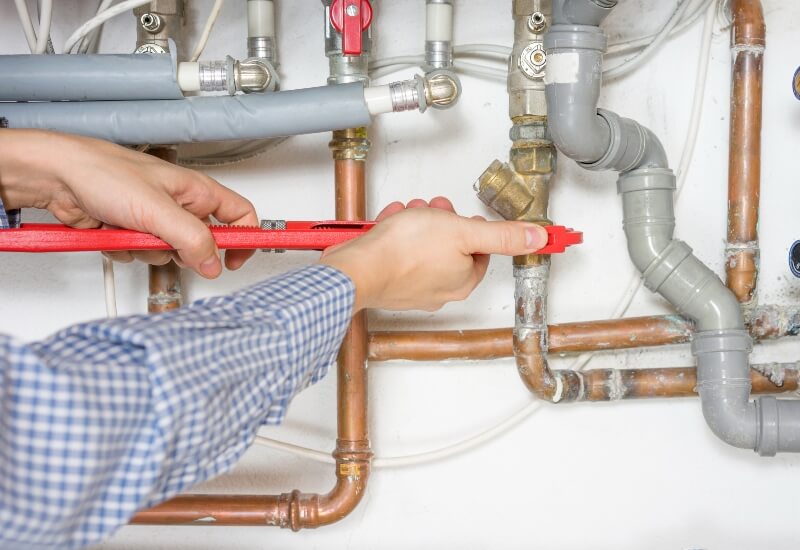In today’s world, sensor valve diagnostics play a crucial role in ensuring the efficiency and longevity of plumbing systems, especially in industrial environments. The diagnostic process helps detect and resolve issues that can disrupt operations. By making sure your systems run smoothly, you’re avoiding bigger problems down the road. Understanding sensor valve diagnostics is essential for maintaining operational integrity and preventing unnecessary losses.

What Are Sensor Valve Diagnostics?
Sensor valve diagnostics involve using advanced technology to monitor and analyze the performance of valves within a piping system. These diagnostics are crucial for detecting anomalies early, allowing for preventive measures to be taken before minor issues become critical failures. This process integrates sensor technology, which provides real-time data on valve operation.
Importance in Industrial Settings
In industries where fluid control is vital, such as oil and gas, pharmaceuticals, and water treatment facilities, the importance of sensor valve diagnostics cannot be overstated. These diagnostics help in maintaining system integrity and safety by ensuring valves function correctly, reducing risks of leaks or malfunctions that could lead to industrial hazards.
How Sensor Technology Works
The integration of sensors within valves allows for continuous monitoring. Sensors can detect changes in temperature, pressure, and flow rates. This data is analyzed to predict failures and optimize maintenance schedules, ultimately saving time and resources. Understanding the functions of smart valves, as presented by Dolphin Fluidics, can offer deeper insight into the technology.
Benefits of Early Detection
Early detection through sensor valve diagnostics helps avoid downtime and operational inefficiencies. By catching problems before they escalate, businesses can maintain high production levels without unexpected interruptions. This predictive maintenance strategy ensures minimal disruptions.
Cost-Effectiveness and Resource Efficiency
Implementing sensor valve diagnostics can significantly cut costs associated with emergency repairs and replacements. The ability to foresee potential issues allows companies to invest in regular, planned maintenance rather than expensive reactive fixes. Reduced sudden costs lead to better resource management and sustainability.
Integration in Smart Systems
As industries move towards automation, integrating diagnostics within smart systems becomes integral. Sensor valve diagnostics complement smart infrastructures by offering enhanced control and data integration, supporting intelligent decision-making processes to optimize system efficiencies.
Technological Advancements
Innovations in sensor technology and data analytics have exponentially increased the capabilities of valve diagnostics. These advancements enable more precise monitoring and analysis, resulting in better performance insights and operational monitoring.
Challenges and Considerations
Despite their benefits, implementing sensor valve diagnostics comes with challenges, such as initial setup costs and training requirements. However, the long-term benefits greatly outweigh these initial hurdles. Companies must consider the best systems that fit their specific needs.
Training Personnel
Proper training for personnel is essential for the effective implementation of diagnostic processes. Employees need the skills to interpret diagnostic data and integrate these insights into maintenance routines. Additionally, knowledgeable staff can extend the benefits of the programs.
Real-World Applications
Industries utilizing sensor valve diagnostics include chemical manufacturing, food processing, and the energy sector. These applications highlight the versatility and critical importance of diagnostics for maintaining operational efficiency across varied fields.
Case Study Insights
Case studies showcase successful implementations of sensor valve diagnostics. For example, in oil refineries, diagnostics have reduced leakages, saving significant costs and protecting the environment. Studying these cases can reveal strategic implementation insights.
Future Trends in Valve Diagnostics
The future holds exciting advancements in valve diagnostics, with trends pointing towards increased automation, improved sensor capabilities, and more comprehensive integration in industrial systems. Embracing these trends can position companies at the forefront of efficiency.
Embracing IoT
The Internet of Things (IoT) is reshaping valve diagnostics, allowing remote monitoring and control. Embracing IoT technologies can offer competitive advantages and massive improvements in operational efficiency for businesses willing to adapt.

Conclusion
Understanding and implementing sensor valve diagnostics is paramount for industrial efficiency and safety. As the field continues to grow and evolve, staying informed can ensure that businesses effectively harness these technologies to their full potential.
FAQ
What are the main benefits of sensor valve diagnostics?
The main benefits include early detection of issues, cost savings from preventive maintenance, and increased operational efficiency through continuous monitoring.
How do sensor valve diagnostics support industrial safety?
By detecting potential valve failures early, these diagnostics prevent sudden leaks or breakdowns, thereby maintaining a safe operating environment and reducing industrial hazards.
What advancements can we expect in sensor valve diagnostics?
Future advancements include greater automation in diagnostic processes, more sophisticated sensor technologies, and deeper integration within IoT systems, enhancing remote monitoring capabilities.
This article contains affiliate links. We may earn a commission at no extra cost to you.



